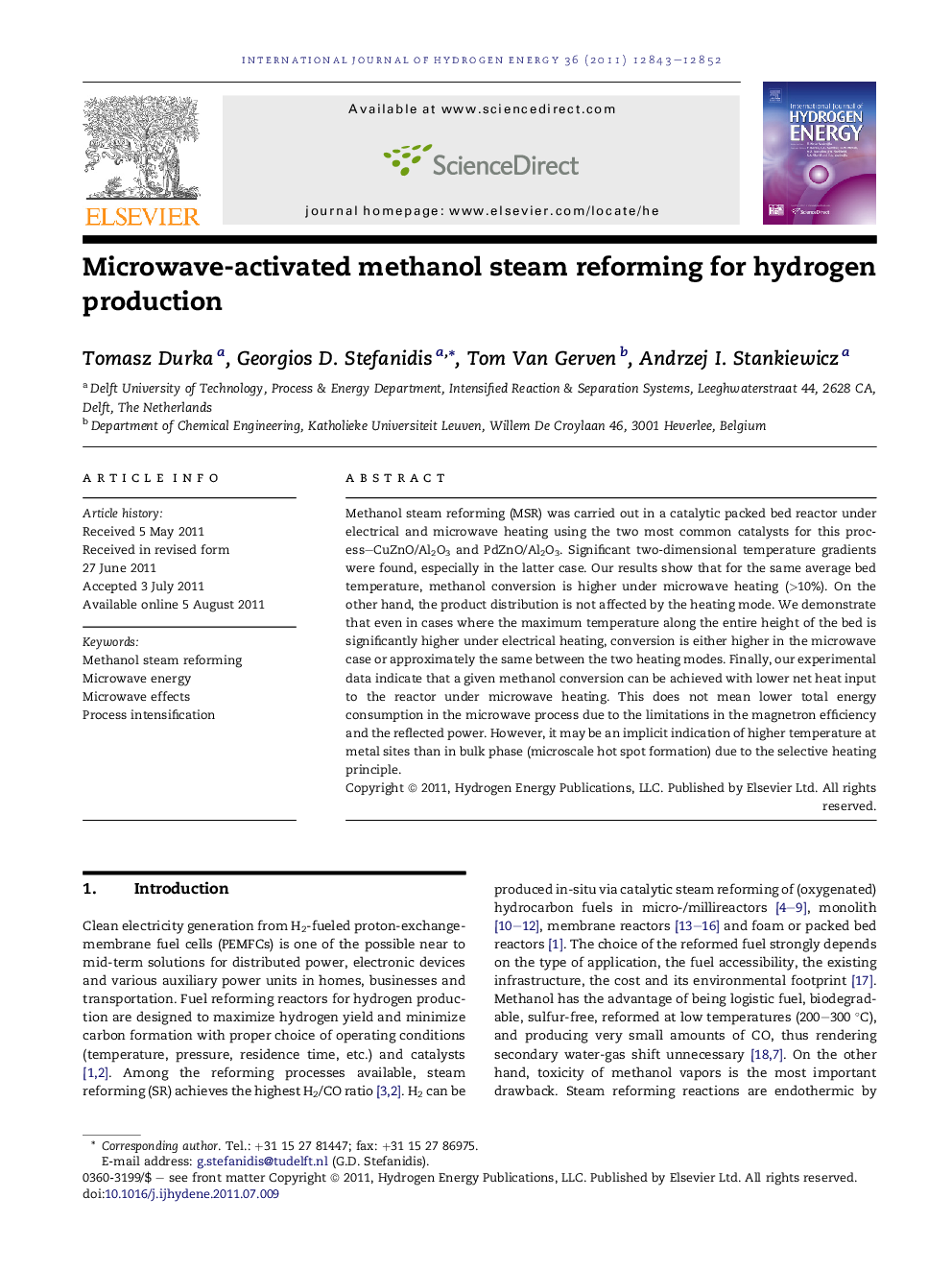| Article ID | Journal | Published Year | Pages | File Type |
|---|---|---|---|---|
| 1271948 | International Journal of Hydrogen Energy | 2011 | 10 Pages |
Methanol steam reforming (MSR) was carried out in a catalytic packed bed reactor under electrical and microwave heating using the two most common catalysts for this process–CuZnO/Al2O3 and PdZnO/Al2O3. Significant two-dimensional temperature gradients were found, especially in the latter case. Our results show that for the same average bed temperature, methanol conversion is higher under microwave heating (>10%). On the other hand, the product distribution is not affected by the heating mode. We demonstrate that even in cases where the maximum temperature along the entire height of the bed is significantly higher under electrical heating, conversion is either higher in the microwave case or approximately the same between the two heating modes. Finally, our experimental data indicate that a given methanol conversion can be achieved with lower net heat input to the reactor under microwave heating. This does not mean lower total energy consumption in the microwave process due to the limitations in the magnetron efficiency and the reflected power. However, it may be an implicit indication of higher temperature at metal sites than in bulk phase (microscale hot spot formation) due to the selective heating principle.
► Microwaves as an alternative energy source for methanol steam reforming. ► Microwave irradiation results in higher temperature gradients compared to electric heating. ► Microwave irradiation increases methanol conversion. ► Application of microwave energy increases the thermal efficiency of the reactor.
